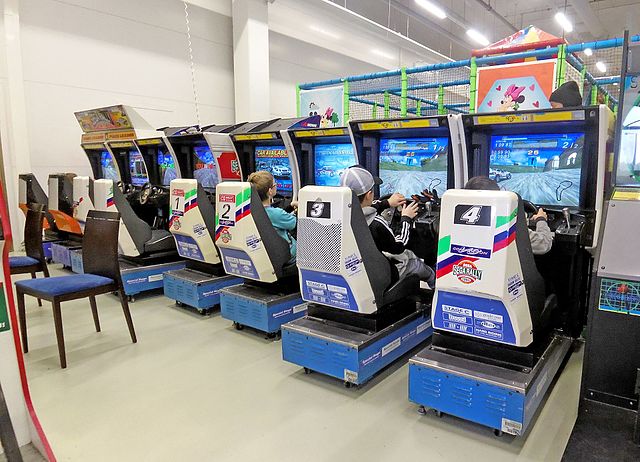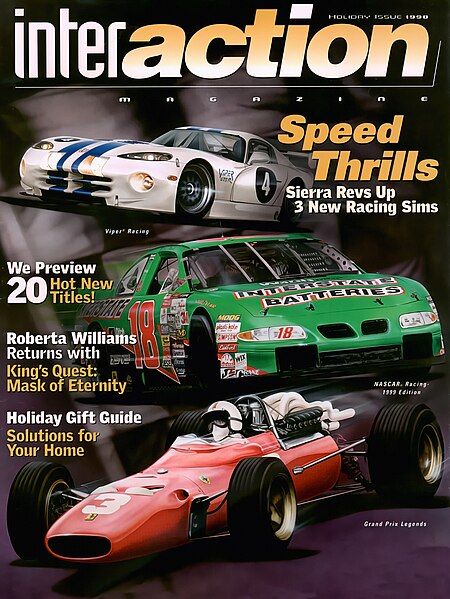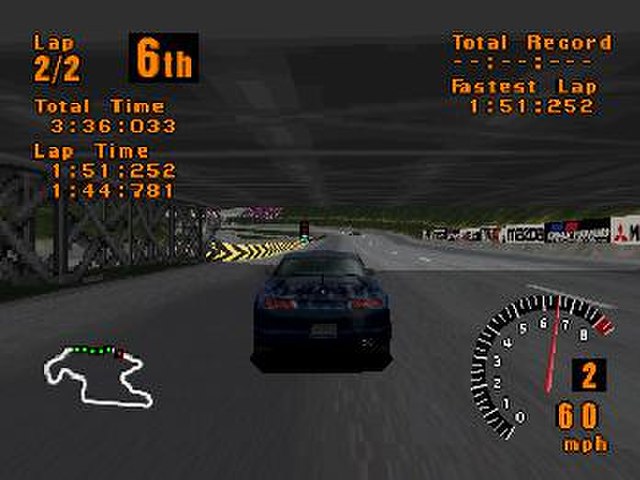Racing games are a video game genre in which the player participates in a racing competition. They may be based on anything from real-world racing leagues to fantastical settings. They are distributed along a spectrum between more realistic racing simulations and more fantastical arcade-style racing games. Kart racing games emerged in the 1990s as a popular sub-genre of the latter. Racing games may also fall under the category of sports video games.
Sega Rally arcade racing games at the Veljekset Keskinen department store in Tuuri, Finland in 2017
Sierra On-Line was a leading publisher of 1990s simulation racing games, including titles like NASCAR Racing 1999 Edition and Grand Prix Legends.
Daytona USA (1994) twin-seat arcade cabinet
Simulated racing or racing simulation, commonly known as simply sim racing, are the collective terms for racing game software that attempts to accurately simulate auto racing, complete with real-world variables such as fuel usage, damage, tire wear and grip, and suspension settings. To be competitive in sim racing, a driver must understand all aspects of car handling that make real-world racing so difficult, such as threshold braking, how to maintain control of a car as the tires lose traction, and how properly to enter and exit a turn without sacrificing speed. It is this level of difficulty that distinguishes sim racing from arcade racing-style driving games where real-world variables are taken out of the equation and the principal objective is to create a sense of speed as opposed to a sense of realism.
Jann Mardenborough, a sim racer, became a professional Nissan racing driver by playing Gran Turismo.
Many cars are digitally recreated for sim racing like this BMW Z4 GT3 from Assetto Corsa.
Gameplay from the first Gran Turismo featuring a Mitsubishi FTO GPX






